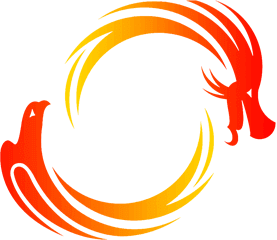

Astana-Almaty 2011
Bandy
Bandy
Bandy is a winter sport, where a ball is hit with a stick.
It shares a common ancestry with ice hockey, in that it likely developed from the informal "ball and stick on ice" games known collectively as shinny. As such, the game is played outdoors on a sheet of ice.
It differs from ice hockey in that rather than developing its own unique rules or codes, it has rules that are similar to association football.
Bandy is played on ice, using a single round ball. Two teams of eleven players each compete to get the ball into the other team's goal using sticks, thereby scoring a goal.
The team that has scored more goals at the end of the game is the winner; if both teams have scored an equal number of goals, then the game is a draw.
There are exceptions to this rule, however. The primary rule is that the players (other than the goalkeepers) may not intentionally touch the ball with their hands or arms during play.
Although players usually use their sticks to move the ball around, they may use any part of their bodies other than their hands or arms and may use their skates in a limited manner.
Heading the ball will result in five minutes in the sin-bin.
Bandy was incorporated into the Asian Indoor Games in 2007 and the Asian Winter Games in 2009.
List of disciplines
- Bandy
Bandy is a winter sport, where a ball is hit with a stick. It shares a common ancestry with ice hockey, in that it likely developed from the informal "ball and stick on ice" games known collectively as shinny. As such, the game is played outdoors on a sheet of ice. It differs from ice hockey in that rather than developing its own unique rules or codes, it has rules that are similar to association football.
An old name for bandy is hockey on the ice or hockey on ice, due to the sport essentially being "field hockey played on ice", but since the mid-20th Century the term bandy is usually preferred, so as not to confuse the sport with ice hockey.
In English as in many other languages in most parts of the world, the term bandy is used. Notable exceptions are Russian, where bandy is still called hockey with ball, and ice hockey is called hockey with puck and Finnish, where bandy is ice ball and ice hockey is ice puck Bandy is played on ice, using a single round ball.
Two teams of eleven players each compete to get the ball into the other team's goal using sticks, thereby scoring a goal.
The team that has scored more goals at the end of the game is the winner; if both teams have scored an equal number of goals, then the game is a draw. There are exceptions to this rule, however.
The primary rule is that the players (other than the goalkeepers) may not intentionally touch the ball with their hands or arms during play.
Although players usually use their sticks to move the ball around, they may use any part of their bodies other than their hands or arms and may use their skates in a limited manner. Heading the ball will result in five minutes in the sin-bin.
In typical game play, players attempt to propel the ball toward their opponents' goal through individual control of the ball, such as by dribbling, passing the ball to a team-mate, and by taking shots at the goal, which is guarded by the opposing goalkeeper.
Opposing players may try to regain control of the ball by intercepting a pass or through tackling the opponent who controls the ball; however, physical contact between opponents is limited.
Bandy is generally a free-flowing game, with play stopping only when the ball has left the field of play, or when play is stopped by the referee.
After a stoppage, play can recommence with a free stroke, a penalty shot or a corner stroke. If the ball has left the field along the sidelines, the referee must decide which team touched the ball last, and award a restert stroke to the opposing team, just like football's throw-in.
The rules do not specify any player positions other than goalkeeper, but a number of player specialisations have evolved.
Broadly, these include three main categories: forwards, whose main task is to score goals; defenders, who specialise in preventing their opponents from scoring; and midfielders, who dispossess the opposition and keep possession of the ball in order to pass it to the forwards; players in these positions are referred to as outfield players, in order to discern them from the single goalkeeper.
These positions are further differentiated by which side of the field the player spends most time in. For example, there are central defenders, and left and right midfielders.
The ten outfield players may be arranged in these positions in any combination (for example, there may be three defenders, five midfielders, and two forwards), and the number of players in each position determines the style of the team's play; more forwards and fewer defenders would create a more aggressive and offensive-minded game, while the reverse would create a slower, more defensive style of play. While players may spend most of the game in a specific position, there are few restrictions on player movement, and players can switch positions at any time.
The layout of the players on the pitch is called the team's formation, and
List of events
-
men
-
TEAM
-
Downloads
Related links
Sports Committee
The Sports Committee consist of one Chairman and a minimum of five members. The Chairman, nominated by his NOC, will be elected by the GA, while the Members preferably representing the 5 zones of t...
Sports and Environment Committee
The Sports and Environment Committee consist of One Chairman and Five Members. The Chairman, nominated by his NOC, will be elected by the GA, while the Members preferably representing the 5 zones o...
Sports for All Committee
The Sports for All Committee shall consist of One Chairman and Five Members. The Chairman, nominated by his NOC, will be elected by the GA, while the Members preferably representing the 5 zones of ...
Sports Federations
-

International Federation
Federation of International Bandy
